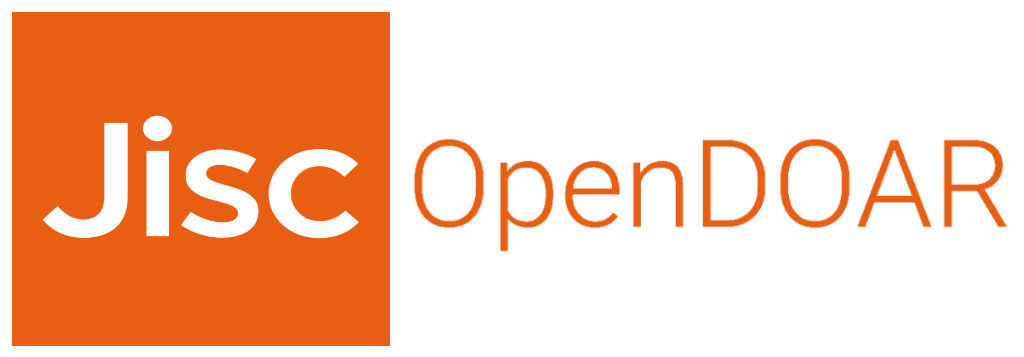Mostrar el registro sencillo del ítem
Promoción de crecimiento en plantas de tomate (solanum lycopersicum) por levaduras psicrófilas.
| dc.contributor.advisor | Acero Godoy, Jovanna | |
| dc.contributor.advisor | Cuervo Soto, Laura Inés | |
| dc.contributor.author | Moreno Fuelantala, Paola Andrea | |
| dc.contributor.author | Osorio López, Valeria Andrea | |
| dc.date.accessioned | 2021-06-29T21:00:31Z | |
| dc.date.available | 2021-06-29T21:00:31Z | |
| dc.date.issued | 2019-12 | |
| dc.identifier.uri | https://repositorio.unicolmayor.edu.co/handle/unicolmayor/305 | |
| dc.description.abstract | En los últimos años se han usado métodos químicos como es el uso de plaguicidas y fertilizantes, que producen baja calidad de las plantas y del suelo, influyendo negativamente en la asimilación de nutrientes, disminuyendo la actividad microbiana en el suelo y su interacción con las plantas. Este trabajo pretende evaluar alternativas biológicas para promover el crecimiento de plantas de interés agrícola y tiene el objetivo de evaluar la capacidad de las levaduras psicrófilas para promover el crecimiento de plantas de tomate (Solanum lycopersicum), analizar los metabolitos que poseen y determinar aquellas que son capaces de tolerar diferentes concentraciones de sal. Los ensayos fueron realizados con 6 cepas de levaduras psicrófilas que fueron aisladas del volcán Xinentécatl (nevado de Toluca), a partir de rizósfera de una planta nativa que se encontraba creciendo en sustrato arcilloso, las cuales fueron inoculadas en las plantas de tomate con el fin de determinar cuáles de ellas promueven mejor el crecimiento, en donde se evidenció que de las 6 levaduras estudiadas las dos mejores promotoras de crecimiento fueron la Rhodotorula 4 y una Levadura blanca 3 (muestra sin identificar), teniendo en cuenta que ninguna de las 6 fue significativamente con respecto al control. Adicional se analizaron aquellos metabolitos que podrían promover estos microorganismos por métodos cuantitativos de espectrofotometría, en donde se encontró que la Rhodotorula 4 y Levadura 7 (Makria spp) son solubilizadoras de fosfatos, bajas productoras de AIA y Amonio, además no son fijadoras de Nitrógeno. Finalmente se encontró que las Rhodotorula 2 y Rhodotorula 4 soportan hasta una concentración de sal de 50Mm y las levaduras blancas toleran concentraciones de sal altas, sin embargo, su crecimiento pasa de ser abundante a moderado a partir de 100 Mm. | spa |
| dc.description.abstract | In recent years, chemical methods such as the use of pesticides and fertilizers have been used, which produce low quality of plants and soil, negatively influencing the assimilation of nutrients, reducing microbial activity in the soil and its interaction with plants. . This work aims to evaluate biological alternatives to promote the growth of plants of agricultural interest and has the objective of evaluating the ability of psychrophilic yeasts to promote the growth of tomato plants (Solanum lycopersicum), analyze the metabolites they possess and determine those that are able to tolerate different salt concentrations. The trials were carried out with 6 strains of psychrophilic yeasts that were isolated from the Xinentécatl volcano (snowy Toluca), from the rhizosphere of a native plant that was growing in clay substrate, which were inoculated in tomato plants in order to determine which of them best promote growth, where it was shown that of the 6 yeasts studied, the two best growth promoters were Rhodotorula 4 and a white Yeast 3 (unidentified sample), taking into account that none of the 6 was significantly with respect to control. Additionally, those metabolites that could promote these microorganisms were analyzed by quantitative spectrophotometry methods, where it was found that Rhodotorula 4 and Yeast 7 (Makria spp) are phosphate solubilizers, low producers of AIA and Ammonium, and are not nitrogen fixers. Finally, it was found that Rhodotorula 2 and Rhodotorula 4 support up to a salt concentration of 50Mm and white yeasts tolerate high salt concentrations, however, their growth goes from being abundant to moderate from 100 Mm. | eng |
| dc.description.tableofcontents | Resumen 13 Summary 14 Introducción 1 Objetivos 3 I. Objetivo general 3 I.I. Objetivos específicos 3 1. Antecedentes 4 1.1. Promoción de crecimiento vegetal por microorganismos. 4 1.2. Microorganismos psicrófilos 4 1.3. Tolerancia a concentraciones salinas por microorganismos. 6 2. Marco referencial 8 2.1. Generalidades del cultivo de tomate (Solanum lycopersicum) 8 2.2. Descripción morfológica y edafoclimatológicas de Solanum lycopersicum 8 2.2.1. Taxonomía. 8 2.2.2. Morfología. 9 2.2.3. Condiciones edafoclimáticas. 11 2.3. Importancia del tomate a nivel mundial y nacional 11 2.4. Valor nutricional 12 2.5. Enfermedades que afectan al Tomate (Solanum lycopersicum) 12 2.6. Características generales de las levaduras. 13 2.8. Efecto del estrés salino en los microorganismos. 15 2.9. Mecanismos de acción de microorganismos promotores de crecimiento vegetal 15 2.9.1. Solubilización de fosfatos. 15 2.9.3. Ácido Indolacético 17 3. Diseño metodológico 18 3.1.1. Objetivo 1. 18 3.1.2. Objetivo 2 20 3.1.3. Objetivo 3 22 4. Resultados 23 4.2. Caracterizar los mecanismos de acción de las levaduras psicrófilas promotoras de crecimiento en plantas de tomate. 29 4.3. Evaluar la tolerancia de las levaduras psicrófilas a diferentes concentraciones salinas. 31 5. Discusión 32 6. Conclusiones 34 7. Recomendaciones 35 8. Referencias 36 | spa |
| dc.format.extent | 74p. | spa |
| dc.format.mimetype | application/pdf | spa |
| dc.language.iso | spa | spa |
| dc.publisher | Universidad Colegio Mayor de Cundinamarca | spa |
| dc.relation.ispartof | No objeto asociado | |
| dc.rights | Derechos Reservados -Universidad Colegio Myor de Cundinamarca ,2019 | eng |
| dc.rights.uri | https://creativecommons.org/licenses/by-nc-sa/4.0/ | spa |
| dc.title | Promoción de crecimiento en plantas de tomate (solanum lycopersicum) por levaduras psicrófilas. | spa |
| dc.type | Trabajo de grado - Pregrado | spa |
| dc.contributor.corporatename | Universidad Colegio Mayor de Cundinamarca | spa |
| dc.contributor.researchgroup | Trabajo de anteproyecto | spa |
| dc.coverage.country | Colombia | |
| dc.description.degreelevel | Pregrado | spa |
| dc.description.degreename | Bacteriólogo(a) y Laboratorista Clínico | spa |
| dc.description.researcharea | Trabajo de anteproyecto | spa |
| dc.identifier.barcode | 60184 | |
| dc.publisher.faculty | Facultad de Ciencias de la Salud | spa |
| dc.publisher.place | Bogotá, Distrito Capital | spa |
| dc.publisher.program | Bacteriología y Laboratorio Clínico | spa |
| dc.relation.references | 1. Organización de las naciones unidas para alimentación y agricultura. FAOSTAT [Internet]. [cited 2019 Sep 10]. Available from: http://www.fao.org/faostat/es/#data/QC/visualize | spa |
| dc.relation.references | 2. Cardona AO. Agronegocios [Internet]. ANTIOQUIA Y NORTE DE SANTANDER SON LOS DEPARTAMENTOS LÍDERES EN LA PRODUCCIÓN DE TOMATE. 2018 [cited 2019 Sep 10]. Available from: https://www.agronegocios.co/agricultura/cuales-son-las-regiones-que-mas-producen-tomate-2728689 | spa |
| dc.relation.references | 3. IDEAM. MAPA NACIONAL DE DEGRADACION DE SUELOS POR SALINIZACIÓN [Internet]. IDEAM. Colombia; 2017. Available from: http://www.ideam.gov.co/documents/24277/69989379/Lanzamiento+mapa+Salinizacion+FN+OPT.pdf/624515d0-799d-41ef-b1ef-bb7e868680f3 | spa |
| dc.relation.references | 4. Yan N, Marschner P, Cao W, Zuo C, Qin W. Influence of salinity and water content on soil microorganisms. Int Soil Water Conserv Res [Internet]. 2015;3(4):316–23. Available from: http://dx.doi.org/10.1016/j.iswcr.2015.11.00 | spa |
| dc.relation.references | 5. Lamz Piedra A, Gonzalez Cepero MC. Revisión bibliográfica LA SALINIDAD COMO PROBLEMA EN LA AGRICULTURA : Review Salinity as a problem in agriculture : plant breeding an immediate solution Alexis Lamz Piedra y María C . González Cepero. 2013;34(4):31–42. Available from: http:/ /www.cubasolar.cu/biblioteca/Ecosolar/ Ecosolar03/HTML/articulo06.htm | spa |
| dc.relation.references | 6. Aguado-Santacruz GA, Moreno-Gómez B, Jiménez-Francisco B, García-Moya E, Preciado-Ortiz RE. Impacto de los sideróforos microbianos y fitosideróforos en la asimilación de hierro por las plantas: Una síntesis. Rev Fitotec Mex [Internet]. 2012;35(1):9–21. Available from: http://www.scielo.org.mx/scielo.php?script=sci_arttext&pid=S0187-73802012000100004 | spa |
| dc.relation.references | 7. Restrepo Correa SP, Pineda Meneses EC, Ríos Osorio LA. Mecanismos de acción de hongos y bacterias empleados como biofertilizantes en suelos agrícolas: Una revisión sistemática. Corpoica Cienc y Tecnol Agropecu [Internet]. 2017;18(2):335–51. Available from: http://www.scielo.org.co/pdf/ccta/v18n2/0122-8706-ccta-18-02-00335.pdf | spa |
| dc.relation.references | 8. Lara C, Oviedo LE, Betancur CA. Bacterias nativas con potencial en la producción de ácido indolacético para mejorar los pastos. Zootec Trop [Internet]. 2011;29(2):187–94. Available from: http://www.bioline.org.br/pdf?zt11016 | spa |
| dc.relation.references | 9. Balcazar W, Rondón J, Rengifo M, Ball MM, Melfo A, Gómez W, et al. Bioprospecting glacial ice for plant growth promoting bacteria. Microbiol Res [Internet]. 2015;177:1–7. Available from: http://dx.doi.org/10.1016/j.micres.2015.05.001 | spa |
| dc.relation.references | 10. Deegenaars ML, Watson K. Heat shock response in psychrophilic and psychrotrophic yeast from Antarctica. Extremophiles [Internet]. 1998;2(1):41–9. Available from: https://link.springer.com/article/10.1007/s007920050041 | spa |
| dc.relation.references | 11. Larran S, Mónaco C, Alippi HE. Endophytic fungi in leaves of Lycopersicon esculentum mill. World J Microbiol Biotechnol [Internet]. 2001;17(2):181–4. Available from: https://link.springer.com/article/10.1023/A:1016670000288 | spa |
| dc.relation.references | 12. Nassar AH, El-Tarabily KA, Sivasithamparam K. Promotion of plant growth by an auxin-producing isolate of the yeast Williopsis saturnus endophytic in maize (Zea mays L.) roots. Biol Fertil Soils [Internet]. 2005;42(2):97–108. Available from: https://link.springer.com/article/10.1007/s00374-005-0008-y | spa |
| dc.relation.references | 13. Peña HB, Reyes I. Nitrogen fixing bacteria and phosphate solubilizers isolated in lettuce (Lactuca sativa L.) and evaluated as plant growth promoters | Aislamiento y evaluación de bacterias fijadoras de nitrógeno y disolventes de fosfatos en la promoción del crecimiento de. Interciencia [Internet]. 2007;32(8). Available from: https://www.researchgate.net/publication/239601784_Nitrogen_fixing_bacteria_and_phosphate_solubilizers_isolated_in_lettuce_Lactuca_sativa_L_and_evaluated_as_plant_growth_promoters | spa |
| dc.relation.references | 14. Sun PF, Fang WT, Shin LY, Wei JY, Fu SF, Chou JY. Indole-3-acetic acid-producing yeasts in the phyllosphere of the carnivorous plant Drosera indica L. PLoS One [Internet]. 2014;9(12):1–22. Available from: https://journals.plos.org/plosone/article?id=10.1371/journal.pone.0114196 | spa |
| dc.relation.references | 15. Asari S, Tarkowská D, Rolčík J, Novák O, Palmero DV, Bejai S, et al. Analysis of plant growth-promoting properties of Bacillus amyloliquefaciens UCMB5113 using Arabidopsis thaliana as host plant. Planta [Internet]. 2017;245(1):15–30. Available from: https://www.ncbi.nlm.nih.gov/pmc/articles/PMC5226999 | spa |
| dc.relation.references | 16. Ibort P, Molina S, Núñez R, Zamarreño ÁM, García-Mina JM, Ruiz-Lozano JM, et al. Tomato ethylene sensitivity determines interaction with plant growth-promoting bacteria. Ann Bot [Internet]. 2017;120(1):101–22. Available from: https://www.ncbi.nlm.nih.gov/pmc/articles/PMC5737082/ | spa |
| dc.relation.references | 17. Trindade RC, Resende MA, Silva CM, Rosa CA. Yeasts Associated with Fresh and Frozen Pulps. Syst Appl Microbiol [Internet]. 2002;25(2002):294–300. Available from: https://www.sciencedirect.com/science/article/abs/pii/S0723202004701150 | spa |
| dc.relation.references | 18. Nakagawa T, Nagaoka T, Taniguchi S, Miyaji T, Tomizuka N. Isolation and characterization of psychrophilic yeasts producing cold-adapted pectinolytic enzymes. Lett Appl Microbiol [Internet]. 2004;38(5):383–7. Available from: https://onlinelibrary.wiley.com/doi/full/10.1111/j.1472-765X.2004.01503.x?sid=nlm%3Apubmed | spa |
| dc.relation.references | 19. Margesin R, Miteva V. Diversity and ecology of psychrophilic microorganisms. Res Microbiol [Internet]. 2011;162(3):346–61. Available from: https://www.sciencedirect.com/science/article/pii/S0923250810002810 | spa |
| dc.relation.references | 20. Thomas-Hall SR, Turchetti B, Buzzini P, Branda E, Boekhout T, Theelen B, et al. Cold-adapted yeasts from Antarctica and the Italian Alps-description of three novel species: Mrakia robertii sp. nov., Mrakia blollopis sp. nov. and Mrakiella niccombsii sp. nov. Extremophiles [Internet]. 2010;14(1):47–59. Available from: https://www.ncbi.nlm.nih.gov/pmc/articles/PMC2797416/ | spa |
| dc.relation.references | 21. Jiang F, Zheng X, Chen J. Microarray analysis of gene expression profile induced by the biocontrol yeast Cryptococcus laurentii in cherry tomato fruit. Gene [Internet]. 38 2009;430(1–2):12–6. Available from: http://dx.doi.org/10.1016/j.gene.2008.09.036 | spa |
| dc.relation.references | 22. Duarte AWF, Passarini MRZ, Delforno TP, Pellizzari FM, Cipro CVZ, Montone RC, et al. Yeasts from macroalgae and lichens that inhabit the South Shetland Islands, Antarctica. Environ Microbiol Rep [Internet]. 2016;8(5):874–85. Available from: https://onlinelibrary.wiley.com/doi/abs/10.1111/1758-2229.12452 | spa |
| dc.relation.references | 23. Limtong S, Kaewwichian R, Yongmanitchai W, Kawasaki H. Diversity of culturable yeasts in phylloplane of sugarcane in Thailand and their capability to produce indole-3-acetic acid. World J Microbiol Biotechnol [Internet]. 2014;30(6):1785–96. Available from: https://link.springer.com/article/10.1007%2Fs11274-014-1602-7 | spa |
| dc.relation.references | 24. Saha C, Seal A. Early changes in shoot transcriptome of rice in response to Rhodotorula mucilaginosa JGTA-S1. Genomics Data [Internet]. 2015;6:237–40. Available from: https://www.ncbi.nlm.nih.gov/pmc/articles/PMC4664776/ | spa |
| dc.relation.references | 25. Vásquez C JA, Ramirez Castrillón M, Monsalve F ZI. Actualización en caracterización molecular de levaduras de interés industrial. Rev Colomb Biotecnol [Internet]. 2016;18(2):129. Available from: https://revistas.unal.edu.co/index.php/biotecnologia/article/view/61530/58120 | spa |
| dc.relation.references | 26. Karlidag H, Yildirim E, Turan M, Pehluvan M, Donmez F. Plant growth-promoting rhizobacteria mitigate deleterious effects of salt stress on strawberry plants (Fragaria × ananassa). HortScience [Internet]. 2013;48(5):563–7. Available from: https://journals.ashs.org/hortsci/view/journals/hortsci/48/5/article-p563.xml | spa |
| dc.relation.references | 27. Ceiro WG, Arévalo J, Puertas AL, Hidalgo-díaz L. Efecto de concentraciones de NaCl sobre el crecimiento micelial y la esporulación de Pochonia chlamydosporia ( Goddard ) Zare y Gams en medio PDA y suelo. 2014;29(2):122–7. Available from: http://scielo.sld.cu/scielo.php?script=sci_arttext&pid=S1010-27522014000200007 | spa |
| dc.relation.references | 28. Vallejo Cabrera FA. Mejoramiento genético y la producción de tomate en Colombia [Internet]. 1°. Zúñiga JE, Morera MG de, editors. Universidad nacional de Colombia. Cali,Colombia: Feriva S.A.; 1999. 1–74 p. Available from: http://bdigital.unal.edu.co/46245/6/9588095026_Part01.PDF | spa |
| dc.relation.references | 29. Pérez J, Hurtado G, Aparicio V, Argueta Q, Larín MA. Guía Técnica CULTIVO DE Tomate [Internet]. Centro Nacional De Tecnología Agropecuariay Forestal. San Salvador, El Salvador: CENTA; 2003. 1–48 p. Available from: http://www.centa.gob.sv/docs/guias/hortalizas/Guia Tomate.pdf29. Pérez J, Hurtado G, Aparicio V, Argueta Q, Larín MA. Guía Técnica CULTIVO DE Tomate [Internet]. Centro Nacional De Tecnología Agropecuariay Forestal. San Salvador, El Salvador: CENTA; 2003. 1–48 p. Available from: http://www.centa.gob.sv/docs/guias/hortalizas/Guia Tomate.pdf | spa |
| dc.relation.references | 30. Axayacatl O. Fases de desarrollo o etapas fenológicas del cultivo del tomate [Internet]. [cited 2019 Sep 12]. Available from: https://blogagricultura.com/etapas-fenologicas-tomate/ | spa |
| dc.relation.references | 31. Escobar H, Lee R. Manual de producción de tomate bajo invernadero [Internet]. Vol. 1, Manual de producción de tomate bajo invernadero. 2009. 180 p. Available from: https://www.utadeo.edu.co/sites/tadeo/files/node/publication/field_attached_file/pdf-manual_produccion_de_tomate_-_pag.-_web-11-15.pdf | spa |
| dc.relation.references | 32. López Sánchez J. Generación de líneas T-DNA de tomate ( Solanum lycopersicum ) para la identificación de mutantes de inserción alterados en la morfogénesis y el desarrollo vegetal. 2017;291. | spa |
| dc.relation.references | 33. Peralta IE, Spooner dm. granule-bound starch synthase (gbssi) gene phylogeny of 39 wild tomatoes (solanum l. section lycopersicon [mill.] wettst. subsection lycopersicon). Genetics. 2001;88(10):1888–902. | spa |
| dc.relation.references | 34. Salud y Buenos Alimentos. Clasificación y propiedades del Tomate (Solanum lycopersicum) [Internet]. [cited 2019 Sep 14]. Available from: http://saludybuenosalimentos.es/alimentos/index.php?s1=Verduras%2FHortalizas&s2=Frutos&s3=Tomate | spa |
| dc.relation.references | 35. Reino Vegetal. ¿Cuáles son las partes de una planta? [Internet]. 2017 [cited 2019 Sep 14]. Available from: http://reinovegetal.net/partes-de-una-planta | spa |
| dc.relation.references | 36. López L. Manual técnico del cultivo de tomate [Internet]. 2017. 63–93 p. Available from: http://repositorio.iica.int/bitstream/11324/3143/1/BVE17079148e.pdf | spa |
| dc.relation.references | 37. Espinoza G. Tomate, Solanum lycopersicum, características de la planta y fruto [Internet]. 07/07/2019. 2019 [cited 2019 Sep 14]. Available from: https://invertebrados.paradais-sphynx.com/artropodos/insectos-clasificacion-caracteristicas.htm | spa |
| dc.relation.references | 38. INFOAGRO. El cultivo del tomate (Parte I) [Internet]. [cited 2019 Sep 14]. Available from: https://www.infoagro.com/documentos/el_cultivo_del_tomate__parte_i_.asp | spa |
| dc.relation.references | 39. Cámara de Comercio de Bogotá CCB. Manual Tomate. In: Programa De Apoyo Agrícola Y Agroindustrial Vicepresidencia De Fortalecimiento Empresarial Cámara De Comercio De Bogotá [Internet]. 2015. p. 1–56. Available from: https://bibliotecadigital.ccb.org.co/bitstream/handle/11520/14307/Tomate.pdf?s | spa |
| dc.relation.references | 40. Montoya Valencia CG. Origen Tomate. 2017;80. Available from: https://bibliotecadigital.ipb.pt/bitstream/10198/14771/1/César Gerardo Montoya Valencia.pdf | spa |
| dc.relation.references | 40. Montoya Valencia CG. Origen Tomate. 2017;80. Available from: https://bibliotecadigital.ipb.pt/bitstream/10198/14771/1/César Gerardo Montoya Valencia.pdf | spa |
| dc.relation.references | 41. INFOAGRO. Agroinformación - El cultivo del tomate. 3a parte. [Internet]. [cited 2019 Sep 11]. Available from: https://www.infoagro.com/hortalizas/tomate3.htm | spa |
| dc.relation.references | 42. Salazar Estrada IG, Galeano Ramírez MC. MICOLOGIA GENERAL [Internet]. 2019 [cited 2019 Sep 14]. Available from: http://www.ucm.edu.co/centro-editorial/ | spa |
| dc.relation.references | 43. Prescott L, Harley J, Klein D. MICROBIOLOGY. fourth edi. Kane K, Smith J, editors. Estados unidos: The McGraw-Hill Companies, Inc.; 1999. 522–530 p. | spa |
| dc.relation.references | 44. Sarmiento F, Peralta R, Blamey JM. Cold and hot extremozymes: Industrial relevance and current trends. Front Bioeng Biotechnol [Internet]. 2015;3(OCT). Available from: https://www.ncbi.nlm.nih.gov/pmc/articles/PMC4611823/pdf/fbioe-03-00148.pdf | spa |
| dc.relation.references | 45. Dalmaso GZL, Ferreira D, Vermelho AB. Marine extremophiles a source of hydrolases for biotechnological applications. Mar Drugs [Internet]. 2015;13(4):1925–65. Available from: https://www.ncbi.nlm.nih.gov/pmc/articles/PMC4413194/pdf/marinedrugs-13-01925.pdf | spa |
| dc.relation.references | 46. Tsuji M. Cold-stress responses in the antarctic basidiomycetous yeast mrakia blollopis. R Soc Open Sci [Internet]. 2016;3(7). Available from: https://www.ncbi.nlm.nih.gov/pmc/articles/PMC4968460/ | spa |
| dc.relation.references | 47. Chauhan A, Bharti PK, Goyal P, Varma A, Jindal T. Psychrophilic pseudomonas in antarctic freshwater lake at stornes peninsula, larsemann hills over east Antarctica. Springerplus [Internet]. 2015;4(1):0–5. Available from: https://www.ncbi.nlm.nih.gov/pmc/articles/PMC4627980/ | spa |
| dc.relation.references | 48. Castagno LN, Estrella MJ, Sannazzaro AI, Grassano AE, Ruiz OA. Phosphate-solubilization mechanism and in vitro plant growth promotion activity mediated by Pantoea eucalypti isolated from Lotus tenuis rhizosphere in the Salado River Basin (Argentina). J Appl Microbiol [Internet]. 2011;110(5):1151–65. Available from: https://onlinelibrary.wiley.com/doi/full/10.1111/j.1365-2672.2011.04968.x | spa |
| dc.relation.references | 49. Patiño Torres CO, Sanclemente Reyes OE. Los microorganismos solubilizadores de fósforo (MSF): una alternativa biotecnológica para una agricultura sostenible. ENTRAMADO [Internet]. 2014;10(2):288–97. Available from: http://www.redalyc.org/articulo.oa?id=265433711018 | spa |
| dc.relation.references | 50. Beltrán Pineda ME. La solubilización de fosfatos como estrategia microbiana para promover el crecimiento vegetal. Corpoica Cienc y Tecnol Agropecu [Internet]. 2015;15(1):101. Available from: http://www.scielo.org.co/pdf/ccta/v15n1/v15n1a09.pdf | spa |
| dc.relation.references | 51. Vyas P, Gulati A. Organic acid production in vitro and plant growth promotion in maize under controlled environment by phosphate-solubilizing fluorescent Pseudomonas. BMC Microbiol [Internet]. 2009;9. Available from: https://www.ncbi.nlm.nih.gov/pmc/articles/PMC2738680/ | spa |
| dc.relation.references | 52. Loredo OC, López RL, Espinosa VD. Bacterias promotoras del crecimiento vegetal asociadas con gramíneas: una revisión. Plant Growth-Promoting Bacteria in Association with Graminaceous Species: A Review. TERRA Latinoam [Internet]. 2004;22(2):225–39. Available from: researchgate.net/publication/258219164_Plant_Growth-Promoting_Bacteria_in_Association_with_Graminaceous_Species_A_Review | spa |
| dc.relation.references | 53. Azcón-Bieto J, Talón M. Fundamentos de Fisiologia Vegetal [Internet]. SEGUNDA. Florensa A, editor. McGraw-Hill; 2008. Available from: http://exa.unne.edu.ar/biologia/fisiologia.vegetal/FundamentosdeFisiologiaVegetal2008Azcon..pdf | spa |
| dc.relation.references | 54. Prado A. Optimizacion de la producción de AIA por bacterias promotoras de crecimiento y evaluación de su efectividad biológica en papa (Solanum tuberosum var. Alpha). 2013;93. Available from: http://repositorio.uaaan.mx:8080/xmlui/bitstream/handle/123456789/534/62681s.pdf?sequence=1&isAllowed=y | spa |
| dc.relation.references | 55. D.K. Malik and S.S. Sindhu. Transposon-derived mutants of Pseudomonas strains altered in indole acetic acid production: Effect on nodulation and plant growth in green gram (Vigna radiata L.). Springer [Internet].2008;14(4). Available from: https://link.springer.com/article/10.1007/s12298-008-0029-8 | spa |
| dc.relation.references | 56. Zedong Tenga, Wen Shao, Keyao Zhanga, Yaoqiang Huo, Min Lia. Characterization of phosphate solubilizing bacteria isolated from heavy metal contaminated soils and their potential for lead immobilization. Science [Internet].2018;231 (189-197). Available from: https://www.sciencedirect.com/science/article/pii/S030147971831140X?via%3Dihu | spa |
| dc.relation.references | 57. Medhin H. Kifle and Mark D. Laing. Isolation and Screening of Bacteria for Their Diazotrophic Potential and Their Influence on Growth Promotion of Maize Seedlings in Greenhouses. Front. Plant Sci. [Internet]. 2016;6(1225). Available from: https://www.frontiersin.org/articles/10.3389/fpls.2015.01225/full | spa |
| dc.relation.references | 58. Castellanos MS, Segura AM, Ñústez López CE. Análisis de Crecimiento y Relación Fuente-Demanda de Cuatro Variedades de Papa (Solanum tuberosum L.) en el Municipio de Zipaquirá (Cundinamarca, Colombia). Scielo [Internet]. 2010;63(1):5253–66. Available from: http://www.scielo.org.co/pdf/rfnam/v63n1/a04v63n01.pdf | spa |
| dc.relation.references | 59. Yarzabal A., Cold-Tolerant Phosphate-Solubilizing Microorganisms and Agriculture Development in Mountainous Regions of the World. Springer International Publishing Switzerland [Internet]¨.2014;113-135. Available from: https://link.springer.com/chapter/10.1007/978-3-319-08216-5_5#citeas | spa |
| dc.relation.references | 60. Silambarasan S, Logeswari P, Cornejo P, Kannan VR. Evaluation of the production of exopolysaccharide by plant growth promoting yeast Rhodotorula sp. strain CAH2 under abiotic stress conditions. Int J Biol Macromol [Internet]. 2019;121:55–62. Available from: https://doi.org/10.1016/j.ijbiomac.2018.10.016 | spa |
| dc.relation.references | 61. Sánchez J, Valencia H, Valero O. Producción de ácido indolacético por microorganismos solubilizadores de fosfatos presentes en la rizósfera de Espeletía grandíflora y Calamagrostís effusa del páramo El Granizo. In 2005. Available from: http://bdigital.unal.edu.co/47915/3/9587014812_Part02.PDF | spa |
| dc.relation.references | 62. Brown T. Anotación de la secuencia del genoma de levadura. In: Genomas. 2007. p. 162 y 163. | spa |
| dc.relation.references | 63. Ahangangoda Arachchige MS, Yoshida S, Toyama H. Thermo-and salt-tolerant Saccharomyces cerevisiae strains isolated from fermenting coconut toddy from Sri Lanka. Biotechnol Biotechnol Equip [Internet]. 2019;0(0):1–8. Available from: https://www.tandfonline.com/doi/full/10.1080/13102818.2019.1631213?fbclid=IwAR0TLZMoZnmHv7dp5SQCxKUYtTlNFlZ4RN5SZk7tTkKXp2rRcNnmMj--hRM&#aHR0cHM6Ly93d3cudGFuZGZvbmxpbmUuY29tL2RvaS9wZGYvMTAuMTA4MC8xMzEwMjgxOC4yMDE5LjE2MzEyMTM/bmVlZEFjY2Vzcz10cnVlQEBAMA== | spa |
| dc.relation.references | 64. González-hernández JC, Peña A. Estrategias de adaptación de microorganismos halófilos y Debaryomyces hansenii (Levadura halófila). Rev Latinoam Microbiol. 2002;44(3–4):137–56. | spa |
| dc.rights.accessrights | info:eu-repo/semantics/openAccess | spa |
| dc.rights.creativecommons | Atribución-NoComercial-CompartirIgual 4.0 Internacional (CC BY-NC-SA 4.0) | spa |
| dc.subject.lemb | Agentes de control biológico de plagas | |
| dc.subject.lemb | Fumigación de suelos | |
| dc.subject.lemb | Bacteriología agrícola | |
| dc.subject.proposal | Psicrófilo | spa |
| dc.subject.proposal | Fósforo | spa |
| dc.subject.proposal | Ácido indolacético | spa |
| dc.subject.proposal | Sal | spa |
| dc.subject.proposal | Nitrógeno | spa |
| dc.subject.proposal | Amonio | spa |
| dc.subject.proposal | Levaduras | spa |
| dc.subject.proposal | Promoción | spa |
| dc.type.coar | http://purl.org/coar/resource_type/c_7a1f | spa |
| dc.type.coarversion | http://purl.org/coar/version/c_970fb48d4fbd8a85 | spa |
| dc.type.content | Text | spa |
| dc.type.driver | info:eu-repo/semantics/bachelorThesis | spa |
| dc.type.redcol | https://purl.org/redcol/resource_type/TP | spa |
| dc.type.version | info:eu-repo/semantics/publishedVersion | spa |
| dc.rights.coar | http://purl.org/coar/access_right/c_abf2 | spa |



















